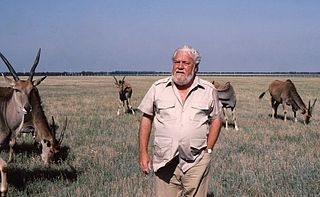
Gerald Malcolm Durrell, was a British naturalist, writer, zookeeper, conservationist, and television presenter. He founded the Durrell Wildlife Conservation Trust and the Jersey Zoo on the Channel Island of Jersey in 1959. He wrote approximately forty books, mainly about his life as an animal collector and enthusiast, the most famous being My Family and Other Animals (1956). Those memoirs of his family's years living in Greece were adapted into two television series and one television film. He was the youngest brother of novelist Lawrence Durrell.
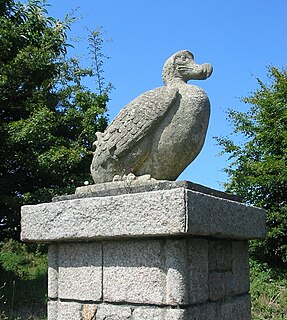
Jersey Zoo is a zoological park established in 1959 on the island of Jersey in the English Channel by naturalist and writer Gerald Durrell (1925–1995). It is operated by the Durrell Wildlife Conservation Trust. It has approximately 169,000 visitors per year; visitor numbers tend to vary with the tourist trade to Jersey.

Lee McGeorge Durrell is an American naturalist, author, zookeeper, and television presenter. She is best known for her work at the Jersey Zoological Park in the British Channel Island of Jersey with her late husband, Gerald Durrell, and for co-authoring books with him.

Durrell Wildlife Conservation Trust is a conservation organization with a mission to save species from extinction. Gerald Durrell founded the Jersey Wildlife Preservation Trust as a charitable institution in 1963 with the dodo as its symbol. The trust was renamed Durrell Wildlife Conservation Trust in its founder's honor on 26 March 1999. Its patron is Princess Anne, the Princess Royal.
The dodo is an extinct flightless bird that was endemic to the island of Mauritius.
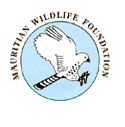
The Mauritian Wildlife Foundation (MWF) is a non-governmental, non-profit conservation agency working in Mauritius to save threatened endemic local flora and fauna.
The Gerald Durrell Endemic Wildlife Sanctuary is an animal sanctuary founded in 1984, in Western Mauritius. It is an area closed off to the public, in the Black River Gorge region, which is densely forested, and is used for breeding rare, endemic Mauritian species. Among the endangered species in the sanctuary is the Mauritius kestrel, once the rarest bird in the world with only 4 members left. It has been successfully bred and the population has now reached the capacity of Mauritius.
Jeremy John Crosby Mallinson was an English conservationist and author associated with the Durrell Wildlife Park and Durrell Wildlife Conservation Trust, where he was director emeritus.

Round Island is an uninhabited islet 22.5 kilometres north of Mauritius. It has an area of 1.69 square kilometres and a maximum elevation of 280 metres. The island has been a nature reserve since 1957 and is administered jointly by the National Parks and Conservation Service and the Mauritian Wildlife Foundation. The island has been designated an Important Bird Area (IBA) by BirdLife International.
Ark on the Move was a documentary television miniseries hosted by zoologist Gerald Durrell on location in Madagascar and Mauritius. The series was produced by Canadian company Nielsen-Ferns and aired from January to March 1982 on CBC Television. It was directed by Alastair Brown and produced by Paula Quigley for Nielsen-Ferns, and was a follow-up to the earlier successful series The Stationary Ark. It was a documentary illustrating the work of the Jersey Wildlife Preservation Trust overseas and in the field. It illustrated the ideas of captive breeding and the professional life of a naturalist. The primary target audience were children.

The Programme for Belize is a private initiative, the first project undertaken in 1988. Financial and management assistance was generously given by the Massachusetts Audubon Society. After the project was identified and started, loans were provided by the Nature Conservancy and donations provided by the World Land Trust. The goal of the project was to purchase and protect tropical rainforests in Belize to prevent them from being sold and cleared to make way for ranching. The project was launched at the London Butterfly House in May 1989. The famous naturalists Gerald Durrell and his wife Lee Durrell were guests of honour, and also visited Belize in 1989 to help with in-situ conservation efforts there. By 1996, more than 250,000 acres (1,000 km2) of land had been purchased and was under the ownership and protection of PfB. The World Land Trust then initiated Friends of Belize to help raise funds to cover costs of continuing protection of the purchased lands, as well as to aid in-situ conservation efforts. Since 2006 World Land Trust has organised regular symposia for the decision-makers of their project partners, and in 2008 PfB hosted the event at their La Milpa ecolodge.
The Durrell family was an English family, two of whose members were best-selling writers. It has been the subject of several autobiographies, the TV series My Family and Other Animals (1987), the television film My Family and Other Animals (2005), the largely fictionalized TV series The Durrells (2016–2019), and the documentary What the Durrells Did Next.
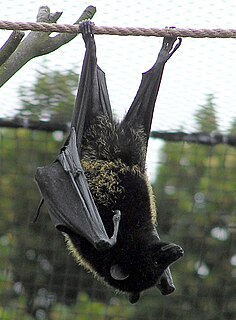
Livingstone's fruit bat, also called the Comoro flying fox, is a megabat in the genus Pteropus. It is an Old World fruit bat found only in the Anjouan and Mohéli islands in the Union of the Comoros in the western Indian Ocean.
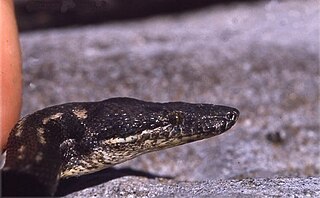
The Round Island boa, also known as the Round Island keel-scaled boa and the Round Island ground boa, is a species of nonvenomous snake in the monotypic genus Casarea in the family Bolyeriidae. The species is endemic to Round Island, Mauritius. No subspecies are currently recognized.

The Rodrigues flying fox or Rodrigues fruit bat is a species of bat in the family Pteropodidae, the flying foxes or fruit bats. It is endemic to Rodrigues, an island in the Indian Ocean belonging to Mauritius. Its natural habitat is tropical lowland forests. The bats are sociable, roost in large groups during the day and feed at night, squeezing the juice and flesh out of fruits. They are hunted by humans for food and their numbers have been dwindling, and the International Union for Conservation of Nature has rated the species as being "endangered". In an effort to preserve them from extinction, some bats have been caught and are being bred in various zoos around the world.
Carl Gwynfe Jones, MBE is a Welsh conservation biologist, who has been employed by Durrell Wildlife Conservation Trust since 1985, and a founding member (1984) and current scientific director of Mauritian Wildlife Foundation (MWF). Additionally he is Chief Scientist at Durrell Wildlife Conservation Trust, and an honorary professor in ecology and conservation biology at the University of East Anglia. Often outspoken on the importance of knowing your species and using intuition, empathy and practical knowledge over dogmatic education, Jones is best known for his work in recovering the Mauritius kestrel from just four individuals in 1974, to an estimated 400. Working in the Mascarene Islands since 1979, Jones has led five successful bird restoration projects where the starting population has numbered less than 12 individuals; as a consequence Mauritius has averted more bird extinctions than any other country. Jones has pioneered the use of ecological or taxon replacements to fill the ecological roles of extinct animals and successfully restored levels of endemic vegetation to previously denuded islets. Jones' work has been highlighted in Douglas Adams and Mark Carwardine's 1990 radio documentary Last Chance to See, along with its accompanying book, as well as David Quammen's 1996 book The Song of the Dodo: Island Biogeography in an Age of Extinctions.
Eleanor Jane Milner-Gulland is the Tasso Leventis Professor of Biodiversity and head of the Department of Zoology at the University of Oxford, and director of the Interdisciplinary Centre for Conservation Science. She is particularly known for her work on Saiga Antelope.








